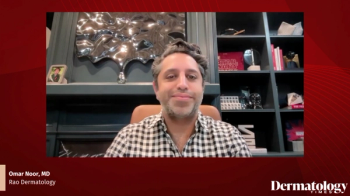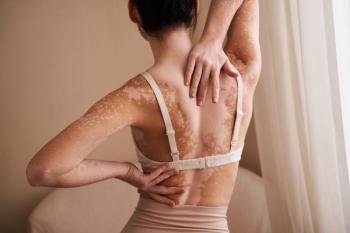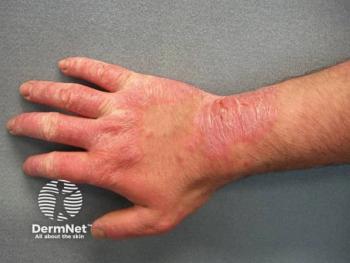
- Dermatology Times, June 2025 (Vol. 46. No. 06)
- Volume 46
- Issue 06
The Growing Burden of Acne in America: Time to Rethink Our Approach
Key Takeaways
- Acne vulgaris is increasingly prevalent and persistent, affecting diverse demographics and imposing significant health and societal burdens in the US.
- Recent data show rising acne incidence, particularly among females and younger children, challenging the perception of acne as an adolescent issue.
Acne is increasingly recognized as a chronic condition, affecting diverse populations and demanding innovative treatment strategies and equitable care access.
Acne vulgaris has long been regarded as an expected part of adolescence—annoying, temporary, and largely inconsequential. But in clinical practice, acne remains one of the most common reasons for dermatology office visits in the United States.1 However, new data presented at the 2025 Society for Investigative Dermatology (SID) Annual Meeting from May 7 to 10 in San Diego, California, suggest a more sobering reality: Acne is not only persisting but intensifying across the United States, affecting a broader swath of the population and imposing a growing health and societal burden.2
The authors, using data from the Global Burden of Disease (GBD) 2021 initiative, provided the most comprehensive picture to date of acne’s impact across age groups, genders, and geographic regions in the US, spanning from 2010 to 2021. Their analysis revealed steady increases in the incidence, prevalence, and disability-adjusted life-years of acne vulgaris, with notable disparities by sex and state. Using standardized GBD methodology and Bayesian meta-regression modeling (DisMod-MR 2.1), the study integrated national surveys, electronic medical records, and insurance claims data to generate epidemiological estimates.
In 2021 alone, the US recorded over 4.4 million new cases of acne, representing a 14.3% increase since 2010. The age-standardized incidence rate reached 1618 per 100,000 population. The total number of prevalent cases in 2021 was over 8.6 million, a rise of more than 14.5% in the past decade, with an age-standardized prevalence rate of 3128 per 100,000. Acne vulgaris remains one of the most common reasons for dermatology office visits in the United States, further emphasizing its ongoing clinical significance and demand for effective long-term management strategies.
These numbers are not just statistics. They reflect a condition that is increasingly chronic, emotionally taxing, and biologically complex. The study results found that females experienced nearly double the incidence rate compared with males and that children younger than 14 years showed the steepest increase in new cases, challenging the assumption that acne is primarily a teenage affliction. Individuals aged 10 to 19 years bore the highest age-specific burden, but the growing trend in younger children should prompt earlier interventions and greater vigilance from pediatricians and dermatologists alike.
The geographic disparities are just as striking. Places such as the District of Columbia, New York, New Jersey, and Connecticut recorded the highest acne incidence, whereas Wyoming, Alaska, and Arkansas reported the lowest. Although the reasons for these variations remain to be fully elucidated, they likely reflect a confluence of factors: climate, air pollution, stress, health care access, socioeconomic status, and even differences in skin microbiota influenced by regional diet or drug use.
Beyond the Skin: A Disease With Deep Consequences
Acne is often minimized in public discourse, but its consequences are real and far-reaching. Patients with moderate to severe acne face an increased risk of depression, social anxiety, and reduced quality of life. These psychosocial effects often persist even after the visible lesions have resolved. Furthermore, untreated or inadequately treated acne can lead to permanent scarring, both physical and emotional.
Despite a growing therapeutic arsenal—including topical retinoids, antimicrobials, antibiotics, hormonal agents, systemic isotretinoin, and laser devices—many patients cycle through multiple regimens without achieving rapid and sustained control. Therapeutic inertia, adverse effect concerns, and limited efficacy in addressing inflammation early and aggressively contribute to suboptimal outcomes.
A Call for Therapeutic Innovation in Acne
This GBD analysis highlights a need to reframe acne as a chronic inflammatory disease rather than a cosmetic inconvenience. Much like atopic dermatitis or psoriasis, acne involves immune dysregulation, barrier dysfunction, and microbiome disruption. However, research and drug development efforts for acne remain disproportionately small compared with its prevalence.
We need new therapeutic strategies that go beyond symptom suppression to fundamentally alter the disease course, starting with early intervention to halt inflammation before it leads to scarring. Advances in acne immunopathogenesis, including insights into cytokine signaling, sebocyte biology, and Cutibacterium acnes–host interactions, provide promising targets. Biologics, microbiome-based therapies, and novel topicals that can modulate inflammation without relying on long-term antibiotics are urgently needed.3
Moreover, personalized treatment approaches that account for sex, age, hormonal status, and genetic factors could optimize therapy selection and improve adherence. The increase in acne among females and younger age groups also underscores the importance of sex- and age-specific studies.4
Bridging Gaps in Access and Awareness
Acne may be common, but its burden is not equally shared. Access to dermatologic care remains uneven across the US, and many patients delay or avoid treatment due to stigma or cost. The rise in acne burden among children and in urban centers should prompt school-based screening programs, public health campaigns, and broader insurance coverage for acne therapies, including mental health support for those experiencing acne-related distress.
This study is also a reminder of the power of population-level data to drive advocacy and research. By quantifying the acne burden at both national and state levels, the authors have given dermatologists, policy makers, and patient advocates the tools to argue for greater investment in acne research and care infrastructure.
Looking Ahead and Practice Implications
The narrative around acne needs to change, from “It’s just a phase” to “This is a chronic, visible, and impactful condition that deserves more attention.” We must push for earlier diagnosis, more effective and tailored treatments, and systems that ensure equitable access to care.
The SID 2025 presentation should serve as a wake-up call: Acne is on the rise, and so too must be our response. The face of acne is changing—and so should the way we treat it.
Christopher G. Bunick, MD, PhD, is editor in chief of Dermatology Times and associate professor of dermatology at Yale School of Medicine in New Haven, Connecticut. Bunick is a director on the board of the American Acne and Rosacea Society.
References
- Grada A, Muddasani S, Fleischer AB Jr, Feldman SR, Peck GM. Trends in office visits for the five most common skin diseases in the United States. J Clin Aesthet Dermatol. 2022;15(5):E82-E86.
- Akbarialiabad H, Taghrir MH, Del Rosso J, Bunick CG, Grada A. Trends in acne vulgaris burden in the United States: national and state-level estimates (2010–2021). Presented at: Society for Investigative Dermatology Annual Meeting; May 7-10, 2025; San Diego, CA.
- Grada A, Armstrong A, Bunick C, Salem R, Feldman S. Trends in oral antibiotic use for acne treatment: a retrospective, population-based study in the United States, 2014 to 2016. J Drugs Dermatol. 2023;22(3):265-270. doi:10.36849/JDD.7345
- Chang J, Nock MR, Cohen JM, Bunick CG. Acne accounts for an almost 2.5-fold higher proportion of dermatology visits among adult females compared to adult males in the United States: a study of the national ambulatory medical care survey from 2002-2016. PLoS One. 2023;18(9):e0290763. doi:10.1371/journal.pone.0290763
Articles in this issue
5 months ago
Dermatology Times June 2025 Print Recap6 months ago
Nail Trends That Challenge Clinical Diagnosis6 months ago
Inside IL-17 Inhibitors Advancing Psoriasis CareNewsletter
Like what you’re reading? Subscribe to Dermatology Times for weekly updates on therapies, innovations, and real-world practice tips.



















